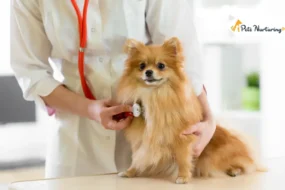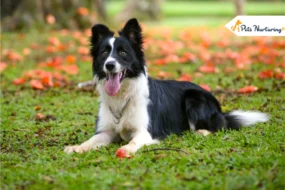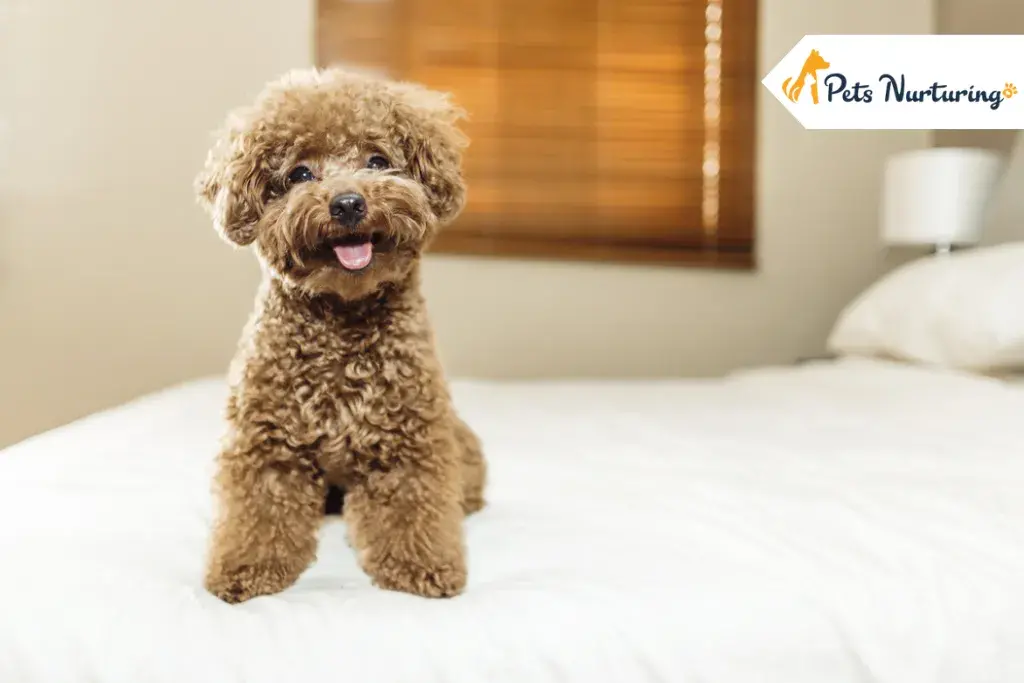
The high intelligence level and hypoallergenic coat make Poodle one of the most popular dog breeds in the world.
If you are looking for a cute companion with all these qualities, Poodle is the perfect choice.
Did you know that Poodles come in different sizes? The smallest version of the breed is known as the Toy Poodle.
Their miniature size, along with the curly coat, makes them look very adorable. The best thing is that they are very active and fun to have around.
They will play with you throughout the day and keep you company at night by cuddling with you.
If you are planning to bring home a Toy Poodle, this guide will give you all the information. We are going to cover their origin, characteristics, and personality and show you how to care for them.
Breed Overview
Poodles come in three different versions – standard, miniature, and toy. The main difference between the three of them lies in their size.
Standard Poodle is your normal-size dog and is the largest among the three versions. Then we have the Miniature Poodle, which is slightly smaller than the Standard version.
Lastly, there is the Toy Poodle, which is the smallest among all three types. All these versions belong to the same dog breed and have the same qualities.
Poodles are your ideal dogs with an amazing personality. They are very smart, easygoing, and always eager to please their owner. These dogs are loyal and will always stay by your side. Moreover, Toy Poodles are extremely cute and look like a puppy even when they grow old.
Toy Poodle Dog Overview
Breed Name: Toy Poodle
Breed Group: Toy
Height: 10 inches or under at the shoulder
Weight: 6 to 9 pounds
Lifespan: 14 to 18 years
Coat: Dense, curly, and coarse
Color: Black, white, apricot, cream, blue, brown, silver, and red
Temperament: Intelligent, active, eager to please and affectionate
Grooming Needs: High – regular grooming required
Hypoallergenic: Yes
Origin: Germany/France
History
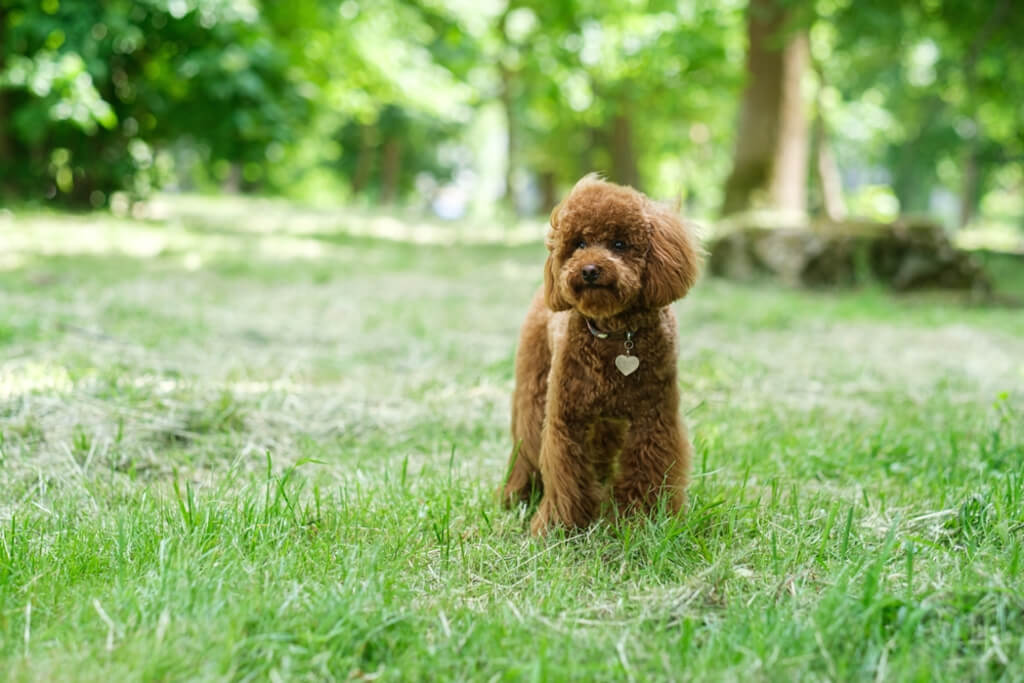
Poodles are the national dogs of France and are often referred to as French Poodles, but their history reveals some interesting facts. They actually originated in Germany around 400 years ago.
People in Germany bred poodles to be great duck-hunting companions. Their thick coats kept them cozy during winter hunts, and their swimming abilities helped them retrieve waterfowl.
Their German name, “Pudel” or “Pudelin,” means “splashing in water.” They’re famous for fetching stuff, so much so that standard poodles are the only non-sporting dogs that can do AKC Retriever Hunting Tests.
That stylish poodle look we know? It goes way back to their hunting days. Hunters snipped their fur so they could move freely but still stay warm. They shaved their legs, tails, and necks and kept the fur around their chests, leg joints, and hips.
Earlier, there was only the Standard version of the Poodle. But later in 18th Century England, people started selectively breeding them for smaller versions. This is how the hardworking hunting dog turned into a celebrity dog. However, even the Toy version of these dogs were workers. They were super smart and athletic, making them stars in circuses.
In the early 1900s, people started breeding Toy Poodles as cuddly companions to keep them in apartments and homes. The American Kennel Club noticed them in 1886, and ten years later, the Poodle Club of America was formed. Now, Toy Poodles are extremely popular all around the world, especially in the United States, where they are in high demand.
Toy Poodles have hair instead of fur.
Appearance
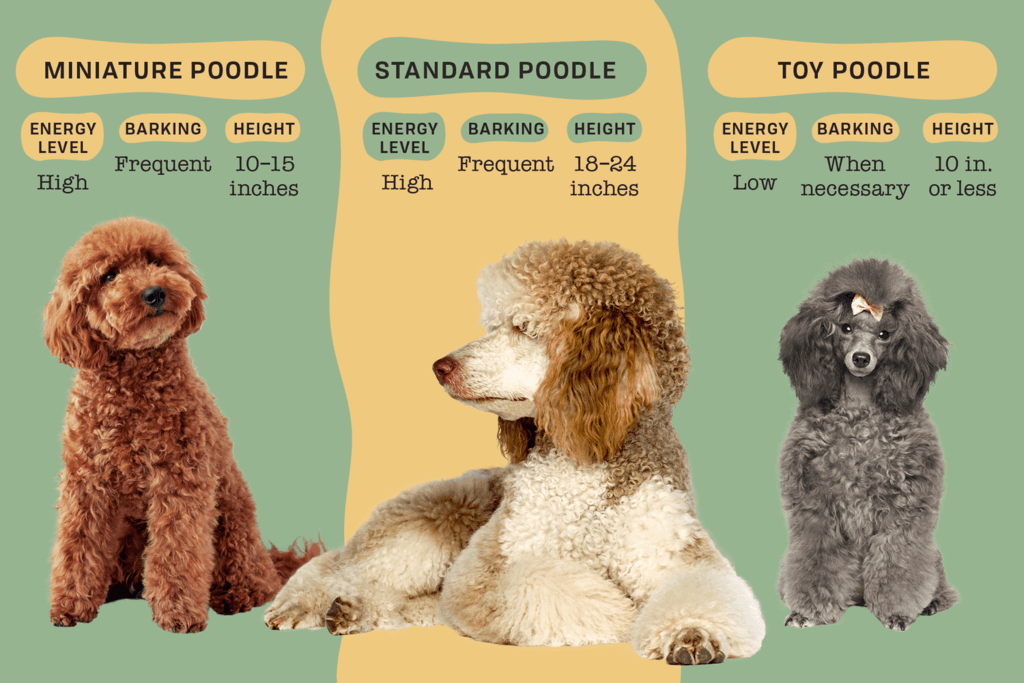
As we discussed at the beginning of this article, Toy Poodles are very small. They’re way easier to carry around and handle compared to the bigger versions of this dog.
| Poodles | Height | Weight |
| Standard | Over 15 inches | 45 to 70 pounds |
| Miniature | 10 to 15 inches | 15 to 17 pounds |
| Toy | Up to 10 inches | 6 to 9 pounds |
When they’re all grown up, Toy Poodles reach a maximum height of 10 inches and weigh between 6 and 9 pounds. Females are slightly shorter than the males.
Their body shape is like other Poodle types, so they’ve got a square head and a well-proportioned body. They’re petite and fit, which makes them really good at agility. Their ears are floppy and hang down the sides of their heads.
They are one of the cutest dog breeds in the world due to their miniature size and curly fur. They look like a small teddy bear and can easily fit inside your purse. Toy Poodles have brown to dark brown eye color, which perfectly complements their coat and makes them look all the more adorable.
Coat Type and Color
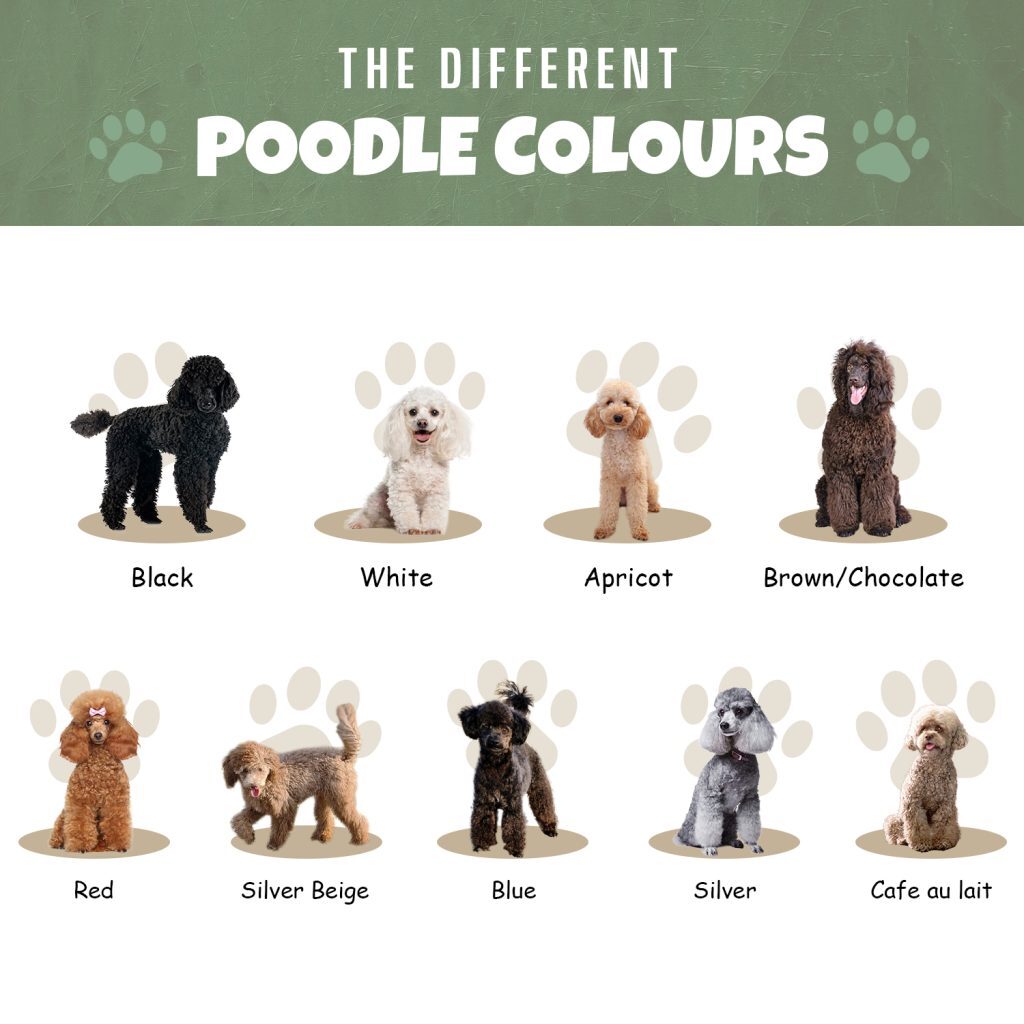
The Poodle Toy breed has a curly coat that can be short as well as long. It’s hypoallergenic, which makes it perfect for people with allergies since these pups don’t shed much.
When they’re babies, Toy Poodle puppies have super soft fur. As they grow up, their curly coat might get a bit rougher, needing some brushing.
Another great thing about these dogs is that they are available in a wide range of colors. While some poodles have a single-color coat, others boast a combination of two or more colors.
Here are some of the different coat colors of Poodles:
- White
- Apricot
- Cream
- Brown
- Blue
- Black
- Red
- Silver
- Black and white
- Brown and white
- Silver and white
The ones with three different colors are known as “tri-colored parti” Poodles.
Toy Poodles were preferred by King Louis XVI of France.
Characteristics and Temperament
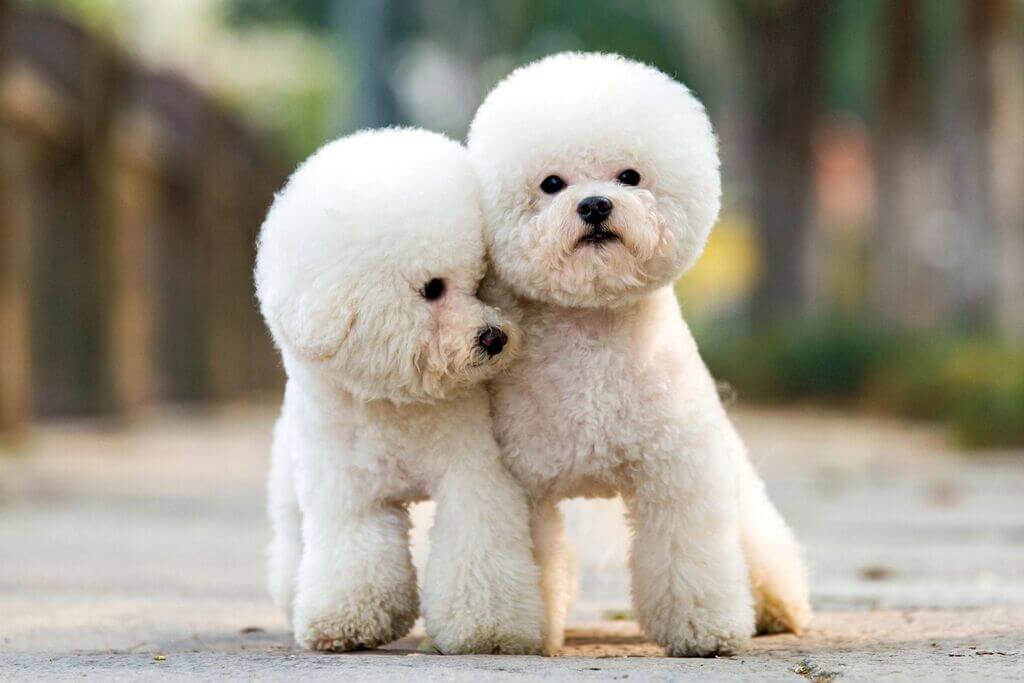
Toy poodles are very intelligent and loyal, making them a perfect family dog. They are highly devoted and always eager to please. These dogs are not just affectionate towards their owner but also love other members of the family.
They can easily get along with children, dogs, and cats when you properly socialize them from a young age. Their easygoing personality makes them perfect for every pet parent.
Poodles also excel at playing different games like Hide and Seek because of their intelligence. However, their smartness can be problematic. If they feel left out or ignored, they might act up just to piss you off and get your attention. They know exactly what you expect from them and can turn the tables with inappropriate behavior just to spite you for ignoring them.
You can easily counter these negative habits by giving them proper attention, training them, and treating them as a reward for good behavior. Toy Poodles are great for small apartments as well as big houses. But you need to include them in regular physical activities to burn the extra energy. They love performing tasks, and you can even train them for agility.
One thing you need to be aware of is their barking tendency. They tend to be very vocal, but you can train them to behave. You can expect them to bark when there is a thread around or when they are trying to communicate something. They are generally friendly to visitors unless they feel uneasy or threatened.
Here’s the summary of the characteristics of the Toy Poodle breed:
- Level of affection – High
- Friendly with kids – Medium
- Overall friendliness – High
- Friendly with other pets – Medium
- Intelligence level – High
- Playfulness – Medium
- Exercise needs – Low
- Energy level – Medium
- Trainability – High
- Shedding – low
- Barking tendency – medium
Health and Nutrition
Your Toy Poodle’s ideal chow depends on its size and how much they move around. Since Toy Poodles are small, they don’t need a ton of calories daily.
It’s best to give them about 200 calories a day, split between two meals. Experts suggest dry kibble made for Toy breeds. Look at the food packet for the right amount based on your pup’s weight.
Overfeeding might pack on extra weight, and without enough exercise, they could end up overweight or even obese. Your vet can help find the right food and the right portions to keep them in good shape.
No matter if you pick wet, raw, or dry food, aim for something high in protein and fiber. The best dog food is made mostly of whole foods and top-quality protein sources like real meat and veggies.
You also need to give them clean water throughout the day. Fill their water bowl with fresh water from time to time. Apart from this, Toy Poodles also need treats, especially when you are training them. Choose healthy and natural treats instead of processed ones. Remember to keep the treat consumption around 10% of their daily calorie intake.
A 5-year-old Toy Poodle named Jinkee has more than sixty-five thousand followers on Instagram.
Common Health Problems
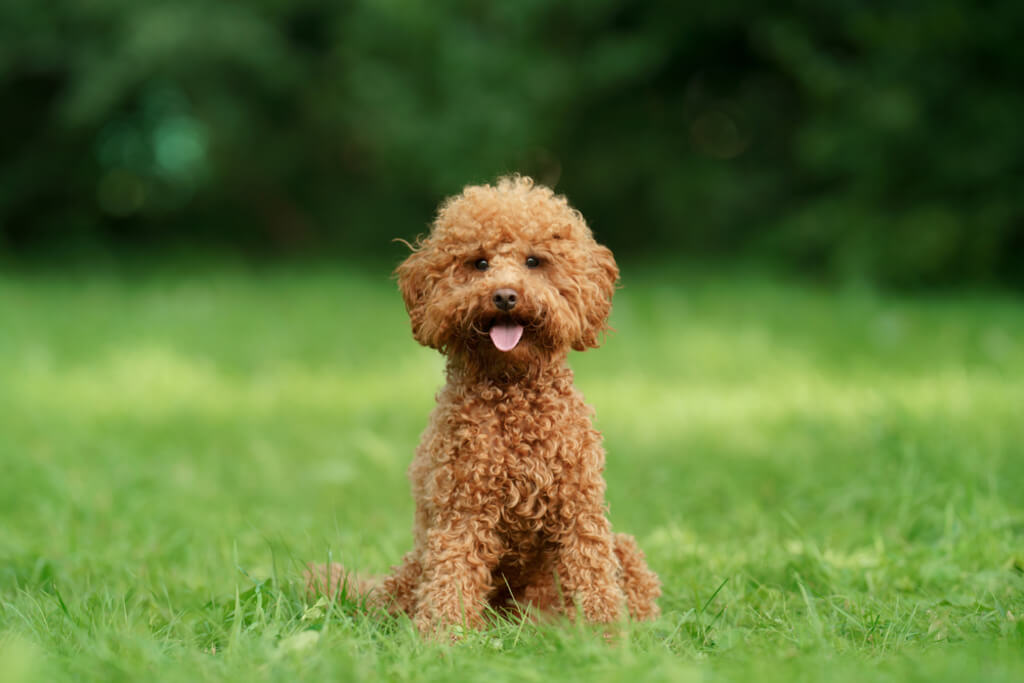
Just like any dog, Toy Poodles can have health problems similar to Standard Poodles. Here are some common issues:
- Cushing’s disease
It happens when your dog’s adrenal glands produce too much cortisol, often due to a tumor. It shows up with signs like increased hunger, thirst, peeing a lot, and hair loss on the backside.
- Progressive retinal atrophy (PRA)
This eye problem leads to blindness as the photoreceptors at the back of the eye are lost over time.
- Hip dysplasia
Hip dysplasia happens when the thighbone doesn’t fit properly into the hip joint. Some dogs might feel pain or struggle to use their rear legs, but others might not show any signs of discomfort.
- Bladder stones
Bladder stones, similar to kidney stones, can be super painful and make peeing tricky. Keep an eye out for signs like blood in their pee or belly pain.
- Addison’s disease
This disease is common in Poodles, where their bodies don’t make enough cortisol, a crucial hormone for daily function. Signs include lots of drinking and peeing, a faster heartbeat, and heavy panting.
To lower the risks, choose a trustworthy breeder and get health checkups from both parents. Keep an eye on your dog for signs of these issues, and visit the vet regularly for checkups.
Behavior and Training
The Toy Poodle fits great into families because they love behavior with everyone, whether kids or grown-ups. They’re good with active families, too, but be watchful when small kids play with them, as they’re delicate.
These dogs gel up well with other dogs at home. They’re people lovers first, but early socializing helps them get along with other pets. Training these brainy pups is pretty easy. They love praise and treats, so teaching them tricks doesn’t take a long time.
Poodles excel at canine sports, agility training, tracking as well as obedience training. They also enjoy water sports. You can easily train them and teach them commands using positive reinforcements.
Since they’re smart, they need mental challenges. If you go out often, give them a toy to keep their brains occupied and prevent any mischief. You can take them on day trips and keep them around other people for socialization.
You also need to keep them moving as it is good for their physical and mental health. Taking them out helps them feel comfortable around new people and burns off extra energy that could turn into stress or anxiety.
An adult Poodle will need two to three walks of 20 minutes each. You can take them to parks or any other area that is pet-friendly. For puppies, five to 15 minutes of walking is enough. They also love swimming and performing tricks. You can have a pool day with your Poodle during the summers.
Grooming Needs
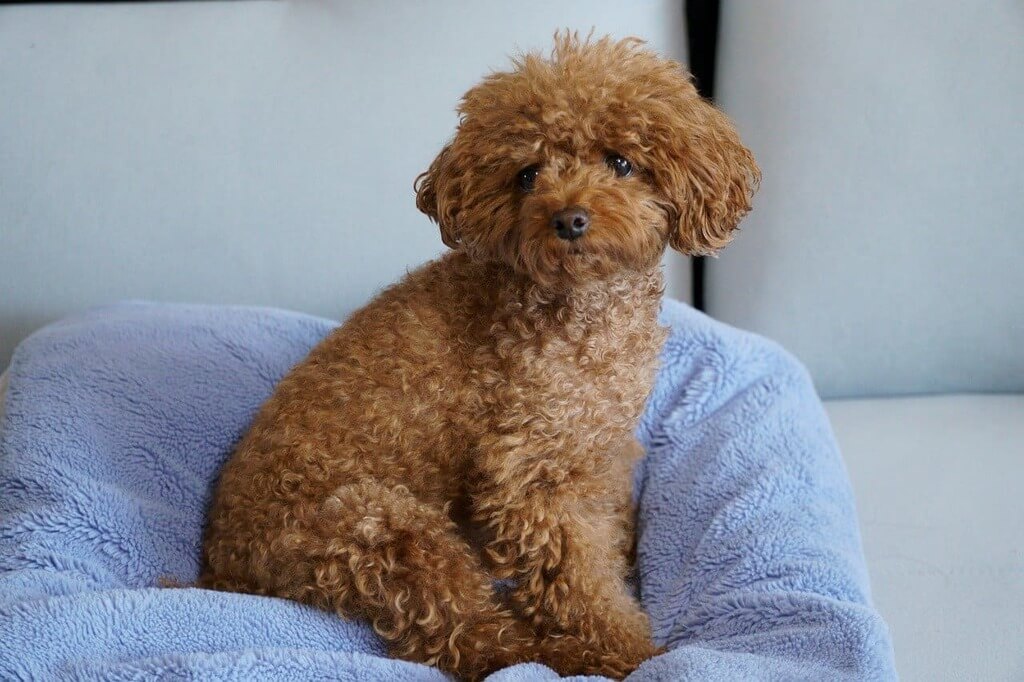
One of the best things about owning a Toy Poodle is that you can style their coat in different ways by choosing various cute Poodle haircuts. Their thick coat allows for plenty of haircut options, so every grooming session can bring a fresh look.
Even though Poodles don’t shed much, they have high grooming needs. You need to brush your coat daily to prevent mats and tangles. Apart from this, they need complete grooming every three to four months. It will include bathing to keep their skin free from any infections.
Trimming their nails and brushing their teeth matters too. Regular teeth brushing keeps bacteria away and avoids dental issues. Since their ears are long and droopy, they are prone to ear infections. You need to clean their ears to avoid this.
Are Toy Poodles Hypoallergenic?
Toy Poodles are considered hypoallergenic because they don’t shed much in any season. While no breed is completely hypoallergenic, the curly coat of Toy Poodles makes them much less likely to cause allergies compared to other breeds.
Allergies often happen because of the protein in a dog’s dander, hair, and saliva. Instead of shedding openly like many other dogs, a Poodle’s hair falls back into itself and can be controlled with brushing rather than floating freely in the air.
Popular American celebrities and icons have owned Toy Poodles.
Price
The price of Poodles depends on their size and the type of breeder you choose. Usually, you will find Toy Poodles for sale around $1,200 to $4,000. The costs can differ among breeders and might also change based on the pup’s age.
Make sure you choose a reputable breeder to get Toy Poodle puppies. Remember to check their health certificates as well as their parent’s health to prevent any genetic disorder.
Toy Poodle Lifespan
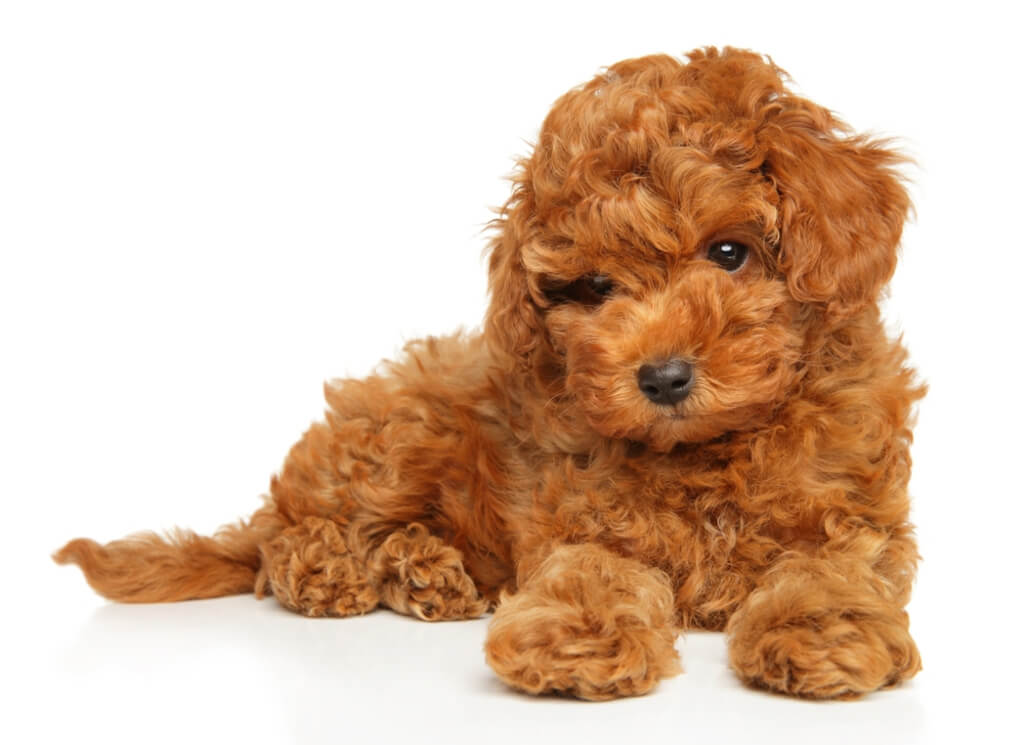
Smaller dogs tend to be healthier than larger dogs. Because Toy Poodles are very small, they have a longer lifespan compared to other dogs. The dogs can live around 14 to 18 years on average.
You can increase their lifespan by giving them healthy food and going for regular vet checkups. This way, you can always monitor their health and prevent any disorders at an early stage.
FAQs
These dogs can reach up to 10 inches in height and 6 to 9 pounds in weight.
Toy Poodles originated in Germany, but some people believe they came from France.
Toy Poodles are smaller in size compared to miniature versions.
Conclusion
The Toy Poodles is one of the smallest dog breeds with a lovely personality. They are smart, caring, and can live in any type of house. While their grooming needs are high, they don’t need much exercise and training.
You can easily train them in just a few weeks, and proper socialization will make them ideal pets. They are perfect family dogs and will give you all the love and affection you need in your life. If you are planning to get a dog, Toy Poodles is a great choice.
Explore Further









